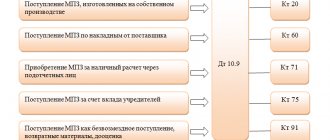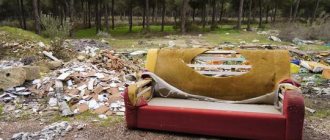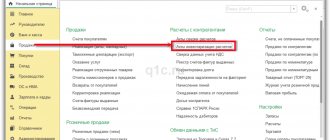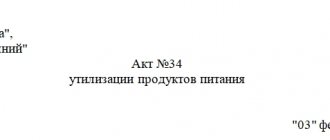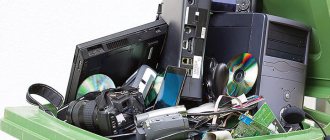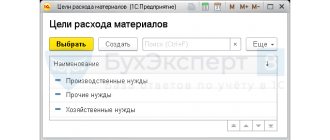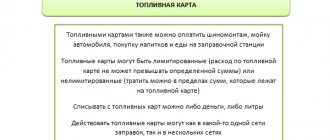How is furniture written off?
Write-off (disposal) is a general inspection of office furniture of budgetary organizations to identify damage and non-functionality.
During the inspection, the reasons for the write-off of furniture are established, which are supported by evidence - a brief outline of the problems that the commission ultimately had to sort out. During disposal, a write-off act is drawn up, in which the expert commission indicates the area and size of the damaged area (mm).
Some tax rules also distinguish between current assets and current assets. Fixed assets include non-current assets that are used for long-term business purposes, include current assets intended for consumption, processing or short-term sale. Note that economically speaking, assets are often referred to as assets. This can lead to confusion: "asset" is a trading term for assets and assets that can be taken into account and which are not exactly covered by the taxable "asset".
If the furniture is damaged
Furniture purchased by an organization for use in public premises (offices, hotels, cafes, shops, doctors' offices, concert halls, etc.) falls into disrepair much more often than its domestic counterparts. As a result of intensive use, individual items may be broken, dirty, the upholstery may be torn, etc.
Information that the organization’s property has fallen into disrepair is recorded in the process of drawing up annual inventory documents or at the time such facts are discovered. The documents drawn up indicate the types of damage to furniture for further write-off, for example:
- damage to the furniture frame (legs, seats, backs of chairs and armchairs, walls, shelves and doors of cabinets and cabinets, legs and table tops, etc.);
- breakdown of mechanisms that ensure the operation of furniture (door hinges, drawer mechanisms, chair casters, etc.);
- deformation of individual parts of furniture due to wetness, excessive heat, etc.;
- wear and tear of the upholstery (fading, thinning, tearing, etc.);
- defects in furniture surface cladding (cuts, cracks, chips, etc.);
- irremovable stains on furniture surfaces, etc.
All of the listed damages can become a reason for writing off the furniture in the write-off act if an essential condition is met: the costs of eliminating these defects are equal to or exceed the cost of purchasing a similar new piece of furniture.
Information on the cost of repairs can be provided by organizations specializing in this type of service.
Fiscal position
The Russian Ministry of Finance expressed its position on the issue under consideration in a letter dated June 15, 2012 No. 03-03-10/71, which the Federal Tax Service of Russia communicated to lower tax authorities in a letter dated June 27, 2012 No. ED-4-3/10519 and posted on its official website in the section “Explanations of the Federal Tax Service, mandatory for application by tax authorities.” True, financiers considered a situation where an organization created an advertising video, which is recognized as an intangible asset. But the approach outlined in the explanations is also applicable to fixed assets. Let us give the reasoning of the officials.
Other expenses associated with production and sales include, inter alia, expenses for advertising manufactured (purchased) and (or) sold goods (works, services), taxpayer activities, trademarks and service marks, including participation in exhibitions and fairs (sub. 28 clause 1, clause 4 of article 264 of the Tax Code of the Russian Federation). That is, the cost of property purchased for use in company promotional events is an advertising expense.
At the same time, according to paragraph 1 of Art. 256 of the Tax Code of the Russian Federation, if the property is owned by a company, is used to generate income, its useful life is more than 12 months, and the original cost is more than 40,000 rubles, then it is considered depreciable.
Based on the above standards, officials made the following conclusion. If the conditions for recognizing property as depreciable are met in relation to objects purchased for use for advertising purposes, then their cost is written off as expenses through depreciation. In this case, the amounts of accrued depreciation relate to advertising expenses.
Let us remind you that special rules have been established for the recognition of advertising expenses. According to paragraph 4 of Art. 264 of the Tax Code of the Russian Federation, advertising expenses include:
— expenses for advertising events through the media (including advertisements in print, broadcast on radio and television), information and telecommunication networks, for film and video services;
— expenses for illuminated and other outdoor advertising, including the production of advertising stands and billboards;
- expenses for participation in exhibitions, fairs, expositions, for the design of shop windows, sales exhibitions, sample rooms and showrooms, production of advertising brochures and catalogs containing information about goods sold, work performed, services provided, trademarks and service marks, and (or) about the organization itself, for the discounting of goods that have completely or partially lost their original qualities during exhibition.
The above expenses are taken into account when calculating income tax in full. But advertising expenses that are not included in this list, as well as the costs of purchasing (manufacturing) prizes awarded to the winners of drawings of such prizes during mass advertising campaigns, are normalized. They are recognized in an amount not exceeding 1% of sales revenue.
If we follow the position of officials, then in the situation under consideration the company must recognize the advertising stand as depreciable property and take into account the accrued depreciation amounts as part of advertising expenses. In this case, depreciation is written off as expenses in full, without applying the standard.
How and when is upholstered furniture written off?
In addition to typical office furniture, upholstered furniture can also be written off. Boarding houses, sanatoriums, hotels of state or private subordination are familiar with this procedure.
Write-off of materials - reasons
Calculating acquisition costs is relatively simple, as cost bases are usually available in the form of supplier and service invoices. Acquisition costs include not only the actual purchase price, but also so-called acquisition costs. In principle, input tax included in the invoice amount is not included in the purchase price. Subsequent maintenance, repair and maintenance costs are not included in the calculation of depreciation.
Production of new goods
Such "reviews" extend over the remaining useful life of the chosen depreciation method, thereby increasing the regular depreciation amounts. In particular, craft and industrial enterprises design, construct, build and expand equipment and means of production rather than purchasing them. The reasons for this vary widely: often an object with a certain form, function or quality is unavailable or too expensive. Sometimes the solution is to produce on its own, or to use unused material or human resources.
As a result of careless or intensive use, negligence in relation to furniture, chairs and sofas that are placed in the halls, guest areas and other common areas of such institutions become unusable. The reasons for the write-off of upholstered furniture manifest themselves in the form of wear and tear of the upholstery, sagging springs, cracks and chips on wooden elements.
Important: determining production costs is not limited to purchase prices for raw materials and main products. Let's say a carpenter decides to make his new office furniture by hand. The following cost items also take into account tax-related production costs on the table, cabinets and shelves.
Material costs: These are the costs of all raw materials and auxiliaries, as well as external components that can be directly attached to objects - for example, wood, blanks, fittings, screws, etc. production costs: these include the labor costs of employees during the period of furniture production. Specialized production costs: This includes the costs of developing and purchasing specific tools or tools needed to produce in-house assets. In carpenter furniture construction, this is only important for large projects. . In certain circumstances, voluntary social staff expenses, general administrative expenses, and interest may be applied on a pro rata basis to finance self-produced assets.
It is clear that an unaesthetic interior can easily spoil the reputation of an establishment, as a result of which the influx of customers may decrease. Therefore, it is advisable to promptly engage in inventory and write-off of damaged items, and systematically update inventory.
Note that this differential determination of production costs is not required in the context of the income statement. As a rule, accounting for small ships and manufacturing companies does not provide the necessary data at all. If our master carpenter, for example, produces office or workshop furniture for his own operational purposes, a simple calculation is sufficient.
Contribution from private assets
Many self-employed and small traders use items from their private property as a matter of course for business purposes. They are often unaware that if they insert qualifying items as a “non-cash contribution” to operating assets, the “cost of deposit” can be amortized over its useful life.
We organize the process of writing off material assets
Material assets are subject to write-off if they:
- Consumed during the normal production process in the manufacture of final products or semi-finished products.
- They have lost their original properties and cannot be used for their intended purpose.
In the first case, for the write-off of each batch of raw materials and materials, there is no need for a special written permission from management - the write-off is carried out according to established standards, which must be justified and approved by the head of the enterprise. The write-off process has its own characteristics, which will be discussed in one of the subsequent sections.
In the second case, writing off valuables requires an individual approach, and in each case, writing off is carried out on commission.
Methods for writing off material assets should be reflected in the accounting policies of the enterprise. Detailed write-off processes (templates for documents for write-off, regulations for their execution and reflection on accounting accounts, other aspects) are prescribed in the internal regulations of the enterprise (Regulations on accounting and write-off of valuables, orders, instructions, instructions).
Thus, even before the start of writing off assets, the enterprise needs to regulate this process (develop internal regulations and instructions) and consolidate important accounting aspects in the accounting policy.
Mirror defects for write-off | zelezebra.ru
Even the smallest stains, and even more so stains, should be of concern, since they are the ones that indicate the low quality of such a piece of furniture. Air bubbles on the surface will also indicate the presence of defects. It is not worth purchasing such a mirror for the hallway or any other room, because it will not perform its functions efficiently, and most importantly, it will spoil the ideal appearance of such a room.
Rule two - reflections
Another opportunity to check the quality of a mirror is to determine its reflective function. To do this, you need to carefully consider your display in it, determining whether it creates unnecessary optical effects or conveys colors that are not what they really are. You can also conduct a small experiment - quickly walk past the mirror.
Defects in furniture products, depending on the reasons for their occurrence, are divided into:
1) defects of incomplete delivery, incl. lack of appliances, fittings, use of cladding that differs in wood texture in one set, etc.
2) manufacturing defects due to violations of technological conditions for furniture manufacturing, which can be:
- obvious manufacturing defects, and
- hidden manufacturing defects that appear during operation.
3) non-production defects (mechanical damage) formed during transportation, storage, operation, incl.
Mirror defects for write-off
A distorted image in it indicates low quality.
Rule three - determining the quality of amalgam
The amalgam used to cover glass when making a mirror can also be of different quality. The higher it is, the longer such a piece of furniture will last, performing its functions perfectly. If the amalgam is rough, has pores and appears gray in color, you should not buy such mirrors, since they are not made in the best way.
Rule four - thickness
A mirror that is too thin may display incorrectly, so when choosing, you should also pay attention to the thickness.
Health care facilities / the owner is obliged
first
carry out his appropriate training
, as a result of which this official will receive a personal state individual right to activities related to medical equipment (here in the text of the link)).
But why then is the owner afraid to do it himself, without substituting a medical technician?!!!
... To organize a technical examination of a piece of medical equipment and during its implementation, both its owner and technical specialists must adhere to the organizational requirements set out in
ORGANIZATIONAL REGULATIONS FOR TECHNICAL INSPECTION.
zelezebra.ru
The most common interview questions
Finding a new employee is a responsible matter, so employers prefer to start the interview with several questions that are unofficially considered standard.
[google_other] Despite the apparent simplicity of the questions, already in the first minutes of the meeting they allow you to filter out candidates into two categories: mediocre and creative. To successfully pass the selection process for a job and leave the right impression, you should think through your answers in advance, using wit, ingenuity and logic.
Below we will tell you what questions you might encounter at an interview and how to answer them correctly.
What can you tell us about yourself?
This is the most popular question. Its goal is to find out what social elevators and professional stages the applicant has gone through, as well as how interesting, capacious and correct he can talk about it.
It is important to remember that the narrative should contain only information useful to the employer, without lyrical digressions, so it should be built according to the following scheme:
- Level of professional education (location of institution, specialty, duration of training).
- Experience.
- Achievements during the working period.
- Information about additional education, skills.
- Personal characteristics.
Read the detailed article “What to tell about yourself at an interview”
Why do you want to work in our company?
It is better to justify the decision to become part of this particular company by the authority of the enterprise among its competitors, recognized merits and positive reviews of full-time employees. It is worth mentioning the subject of the meeting – a vacancy that fully meets the applicant’s needs.
Why should preference be given to your candidacy?
By voicing such a question, the employer wants to understand how convincing the applicant is and whether he has any “trump cards”. The answer should be based on the principle of evidence with an abundance of arguments or facts. It is necessary to praise yourself and remember personal achievements or intrigue with the presence of your own effective development strategy.
For example:
- During the period of tenure in a similar position at the previous place of work, the level of sales in the assigned area increased by 50%.
- It was possible to increase the active client base by 10% just two months after employment.
- Describe the negotiation mechanisms that have led to several major deals.
What are your strengths and weaknesses?
The employer asks the question in order to find out how self-critical the applicant is. When listing the advantages and disadvantages, the applicant is recommended to focus only on those qualities that are directly related to the vacant position. [google_other]
Answers for each category should be extraordinary, for example:
- I easily find a common language with people of different categories and ages.
- I have experience in establishing and building long-term partnerships.
- I effectively negotiate at different levels.
- I can organize my working time rationally.
There are no ideal people, and absolutely everyone has flaws. The applicant’s task in this case is to present them in such a way that they seem insignificant to the recruiter or in some way even relevant.
For example:
- I treat professional matters like a child, and often worry too much about work.
- I am a chronotype night owl, so I have difficulty getting up in the morning.
- I get tired of routine, so I periodically change my usual approach to work.
What is your outlook for the next five years?
The question reveals the level of ambitions, initiatives, ideas and plans of the applicant, so the answer should indicate a great desire to develop, grow both in the position and in the field as a whole. It is appropriate to talk about gaining the necessary experience, which will open up the prospect of moving up the career ladder.
What salary level suits you?
One of the main questions, the answer to which will make it clear to the employer how the applicant evaluates himself.
The potential amount of remuneration should be established based on the following criteria:
- Earnings at previous place of work.
- Average salary at the new employer's enterprise.
- Level of professional education, experience and skills.
An alternative answer, without specifying a specific amount of payment, might sound like this: “I will be ready to discuss this point after reviewing the full scope of duties and level of responsibility.”
DIY air conditioner hose repair
Due to a violation of the seal in the hoses and main pipes, the car air conditioner does not work properly. This is the most common breakdown in a car's cooling system.
The pipes in question are located at the bottom of the car. Due to their location, they are affected by external mechanical influences, which leads to various damages and the car’s air conditioning stops working correctly. The most reasonable solution to this problem is to replace the device hose.
There is a version that the reduction in the service life of the hose and tubes is due to their contact with dirt and high humidity. In addition, debris on the road and vibration in the area of the wheel arches provoke cracks, so it’s worth considering and replacing the lines with metal ones, as they are more durable. Although, even such a resistant material as metal has its drawback - tubes made from it are susceptible to corrosion and are not resistant to temperature changes.
Hose repair
Replacing a hose is far from cheap, so it's worth knowing how to do it yourself.
If the rubber hose is not significantly damaged, you can solve this problem with a patch. The patch is made using specialized tools and substances; its damage is significant, then the hose must be replaced with a new one.
If you decide to replace the hose yourself, follow the description below:
- First, you need to choose a hose that is suitable in size.
- After this, crimping cylinders are hung on it.
- Finally, it is placed on the teeth and crimped with cylinders.
To avoid such problems, it is important to regularly carry out repairs and maintenance of the car’s climate system; if the breakdown is not repaired in time, the malfunction may develop into a larger problem.
Video describing in detail the repair of air conditioning hoses:
Basis for writing off raw materials and supplies for production needs
Write-off of actually spent inventories and assignment of their value to production costs are carried out on the basis of a special act (material report), drawn up in any form, which reflects the information:
- about the material (name, quantity, registration price and amount for each item);
- about the order (product, products) for the manufacture of which the material was used;
- about abnormal costs of materials (overconsumption/savings), their volumes and reasons for their occurrence;
- other information (for example, the quantity of manufactured products, the volume of work performed, etc.).
Costs for materials are reflected in the corresponding accounting accounts and form the cost of finished products (semi-finished products, work in progress).
According to paragraph 43 of FAS 5/2019, transactions leading to a change in the type of inventories (for example, release into production) are not grounds for derecognition of inventories as assets.
How to conduct an inventory of goods and materials, read the article
Production and delivery of stands. Accounting
In accordance with the Instructions for the application of the Chart of Accounts for accounting the financial and economic activities of organizations, approved by Order of the Ministry of Finance of Russia dated October 31, 2000 No. 94n, expenses associated with the sale of products are reflected in the account "" with subsequent write-off to the debit of the account, subaccount "Cost of sales "
In our opinion, the amount of VAT accrued in accounting in this situation can be reflected, just like the cost of transferred products, as part of sales expenses.
For the purposes of calculating income tax, the taxpayer reduces the income received by the amount of expenses incurred (except for the expenses specified in Article 270 of the Tax Code of the Russian Federation (clause 1 of Article 252 of the Tax Code of the Russian Federation)).
Write-off of fixed assets: documentation
Writing off fixed assets seems common and simple, but in reality the company needs to draw up a number of papers that would confirm the legality of disposal of fixed assets.
The disposal is preceded by the execution of an order to create a special commission, which is tasked with writing off fixed assets (documentary registration of the formation of such a commission is strictly necessary). It includes the following persons:
- chief accountant of the company;
- technical specialists;
- MOLs to which fixed assets subject to disposal are assigned.
Responsibilities and functions of the commission for writing off fixed assets
During the creation of the commission, their powers are determined. The guidelines provide for the inclusion of the following functionality in this list:
- The commission is inspecting the decommissioned facility. She is also responsible for drawing up all documentation related to write-offs. This includes not only technical and commercial documents, but also accounting documents.
- The reason for write-off is established, as well as the impossibility of using the OS object for subsequent use, restoration or sale.
- The circle of culprits is determined if the OS has become unusable before the established service life, was damaged or partially damaged. During the proceedings, the Commission develops proposals to involve these workers in compensation for damages.
- If some parts of a fixed asset can be used in further work (for example, as a spare part for other equipment), then a list of these parts is compiled and their cost assessment is carried out. In the future, it is the commission that is responsible for the dismantling of all the listed parts.
- Filling out write-off acts, signing all necessary documentation.
Upon completion of the inspection of the object, a special commission draws up a decommissioning act. The form of this document is approved by the head of the organization. If desired, you can also use unified acts approved on January 21, 2003 after the release of Resolution No. 7 of the State Statistics Committee of the Russian Federation. If an enterprise independently develops forms of acts, then they must comply with the requirements reflected in Federal Law No. 402-FZ of December 6, 2011.
Forms of acts for write-off of fixed assets
During the work of the commission, acts of the following forms can be drawn up:
- OS-4 is used to write off one object that is not a vehicle;
- OS-4a - to be filled in in case of disposal of vehicles;
- OS-4b - it is necessary for writing off several fixed assets not related to motor vehicles at once.
When transferring fixed assets to other organizations, an acceptance certificate is used. This is the justification for the write-off in this case.
Mandatory details of write-off acts
The main document confirming the work of the commission is the write-off act. It must indicate the following information about the written-off fixed asset item:
- when it was produced or erected;
- when and at what cost it was accepted onto the balance sheet of the enterprise;
- lifetime;
- the total amount of accrued depreciation;
- why is it written off?
- its quality characteristics.
Features of drawing up a write-off act
After drawing up, the act is signed by all members of the commission and approved by the head of the organization. Only after this, information about its disposal is entered into the inventory card of the object. This is done by the chief or other authorized accountant. The inventory card must be kept at the enterprise after disposal of the object for another 5 years.
All accounting entries are made on the basis of the write-off act. The document must be drawn up in two copies. They are handed over to the following persons:
- responsible accountant;
- MOL of this object (only with the presence of an act is it possible to deliver the object’s spare parts to the warehouse).
Certificate of write-off of equipment that has become unusable
Using this link you can download “” for free in doc format, 12 KB in size.
All organizations are faced with the need to write off old equipment.
Computers, office equipment and other property must be disposed of according to a write-off report. Correct write-off requires an expert opinion on the condition of the equipment, which contains an assessment confirming the impossibility of further use. A specially created commission or an invited expert organization draws up a technical inspection report, on the basis of which it is possible to write off fixed assets from the balance sheet and dispose of them.
Property tax has to be paid for equipment that has not been written off but is out of order or obsolete. You can write off fixed assets gradually - through depreciation, but there is a shorter way - drawing up an equipment write-off act. It is recommended to write off material assets that:
- cannot be used because they have become unusable;
- do not exist based on inventory results;
- obsolete;
- extremely worn out;
- damaged when repair is impossible or economically unfeasible.
Every year, the head of the organization must issue an order appointing a commission to write off fixed assets.
The chairman of such a commission is, as a rule, a deputy director, and the members of the commission are the chief accountant, economists and engineers. In most cases, fixed assets are subject to write-off in the following cases:
- The property fell into disrepair.
- It is impossible or economically infeasible to restore the object.
- Equipment does not exist as a single entity.
All three circumstances must be present, otherwise the write-off will be illegal. For example, you cannot write off a computer on the grounds that its performance is not sufficient to run a program.
We recommend reading: Temporary registration in MFC documents
The hardware remains suitable for lower performance programs such as word processing or email.
The write-off of the printer will be considered unreasonable if the commission does not include a technical specialist who can confirm that the fixed asset cannot be repaired. It will also not be legal to write off equipment without a decision on its disposal. If the organization does not have a technical service that can competently confirm the impossibility of restoring equipment, you should contact third-party specialists.
The list of activities of the invited organization must include an examination of the technical condition of equipment, a documented level of qualifications of specialists for conducting diagnostics of the relevant fixed assets. An agreement with the wording is concluded with the selected organization
“Diagnostics of equipment to estimate repair costs”
. If the certificate of completion of work issued by the invited organization contains a conclusion about the malfunction and impossibility of restoring the equipment, the organization that owns the fixed assets will receive sufficient grounds for write-off.
To make an informed decision about the feasibility of restoring equipment, you should:
- compare the cost of repairs with the price of new equipment;
- assess the consequences taking into account the duration of repairs;
- compare the warranty period of new and refurbished equipment.
When making a decision to dispose of equipment, an appropriate act must be drawn up with photographic materials documenting the disassembled (destroyed) object.
The photographs must show the brand and serial number of the equipment.
© BBF.ru
- "" in doc format, size 12 KB
- Published on December 3, 2015, in the “” section
Let's not separate
Congratulations on getting a job in your own words
Congratulations on your new beginning, on your new start in your career, on your new job. I wish you not to waste time getting ready and getting into the working atmosphere, but to immediately begin achieving your goals and implementing all your ideas. I wish you great success in your new place, respectful treatment and a decent salary.
We congratulate you on taking up your new position, we wish you professional success, career growth, well-coordinated work in a friendly team and health.
Congratulations on your new job, and may this start be truly successful. I wish you to be a professional in your field, with pleasure and inspiration to open a new page of the working day, at the end of which there will always be a stamp of victory and your personal signature.
Congratulations on your new job and I want to wish that it will be joy and pleasure, that hard work will be rewarded with sincere gratitude and a high salary, that in the new field of activity you will be able to realize all your plans and ideas, that life will provide the opportunity for complete self-realization, that your happiness will always was with you.
Congratulations on your new job, new beginnings, new plans, new aspirations, new opportunities. Let your work be easy and fun, let every effort bear fruit, let your activities provide you with high status, prestige, success and prosperity.
I sincerely congratulate you on your new job. Let there be high results, brave successes, grandiose achievements, high salaries, interesting ideas, excellent mood, good health and a happy life.
Congratulations on starting your new job. I wish you to deftly and quickly climb up the career ladder. Take the position you undoubtedly deserve. It’s great to fit into the team and show your best qualities, to establish yourself not only as an excellent employee, but also as a good person. Let this new job bring you the desired, sufficient income and moral pleasure.
Congratulations on your new job and I sincerely wish you to feel in demand and an accomplished specialist in your field, I wish you to love this work and give 100 percent in every task, I wish you to be on the same wavelength of determination with your colleagues and to always receive immodest rewards for all your efforts. Good luck and good ideas!
Let this stage be an important lesson for you that will be beneficial and open up new horizons and opportunities. I know for sure that everything will work out for you, and your career will run uphill like a spring stream. Happy new job!
Congratulations on your new job. May the new status and new role bring undoubted luck and prosperity, may every day be filled with interesting ideas and successful ideas, may hard work and brave enthusiasm receive gratitude and reward, may good luck and a wonderful mood always accompany you.
All about glass recycling and disposal
- In our country, glass recycling annually saves more than 10,000 hectares of land that could otherwise become landfills.
- That is why the problem of large-scale and timely processing of this material does not lose its relevance to this day. Let's talk about the benefits of glass recycling
- glass is a 100% recyclable material - thus, after its processing there are no by-products left that negatively affect the environment;
- every 1000 kg of recycled waste saves more than 1000 kg of natural materials, including 200 kg of limestone, about 180 kg of soda and more than 600 kg of sand;
- You can earn additional money by delivering material to glass container collection points.
Main types of waste 1. Glass containers: glass bottles and jars.
How can you write off production materials in accounting?
There are 3 options on how to do this:
- at cost;
- average cost;
- FIFO method.
When one of them is selected, it should be documented in the accounting policy. It will then need to be applied consistently in each period. It can be changed only if the chosen method is canceled at the legislative level.
If it is difficult for you to control these moments, then you should use special software in which keeping records will be easy even for a non-accounting specialist. To purchase this software, you should contact Cleverence. Our specialists will help you choose the right programs, install them and show you how to use them in order to spend a minimum of time taking into account all these details.
The most common types of faults
There are a number of malfunctions that every person should know in order to take appropriate measures in time. So what could go wrong:
- Defects in the winding wheel, as a result of which characteristic cracking sounds are heard during winding, or the hands move with difficulty;
- The factory spring has burst, so when moving, the wheel moves slowly at first, then suddenly breaks off;
- The axis of the central wheel is bent, the result is that the arrow touches the dial or glass;
- The glass protection is damaged, and therefore urgent repair of the watch glass (replacement) ;
- A problem has arisen with the friction unit, as a result of which the arrows are static during the working mechanism;
- The winding spring is so strong that “time rushes” and the operation of the mechanism is accompanied by an unnatural sound;
- Stopping a fully wound watch prematurely is most likely due to an abundance of oil in the spring;
- The clock's late". Then you need to lubricate the spring with oil or straighten it. And if you “stopped”, then most likely either dirt got inside, or the drum teeth are bent/cut off, in this case you need to: either clean or replace the mainspring and drum;
- When the mechanism swings in the case, both the operation of the device and the person’s perception of time are disrupted. Here you will need to tighten the mounting screws.
This is not a complete list of problems that may arise. Sometimes you can adjust the operation of the device yourself, but in some cases you should contact a watch repair service center.
Nuances that arise when writing off materials in different industries
All the types mentioned above are the same for all areas of the company’s activities. But there are still small specifics for individual companies. Let's look into this.
Construction niche
The main difference here is that there is a wide variety of materials, and at the same time, the primary documentation is filled out with insufficient quality.
Here, in order to write off raw materials, you need to prepare a whole set of papers:
- monthly reports on consumption of inventories;
- estimates;
- production standards for expenses, which are approved by the general director;
- journals for recording work already completed.
Any construction organization conducts a monthly recalculation and assessment of consumed raw materials in open storage. During the month, their expenses are not taken into account, so they are inventoried 12 times a year. Based on the results of this event, the MPZ is written off.
Agricultural enterprises
Here, operations require specific primary documents:
- act of consumption of seeds and other prepared planting material;
- a statement according to which feed is accounted for in accordance with the plan;
- a document that is drawn up in the event of death or forced slaughter of animals and poultry.
But simply filling out these papers is not enough. It is important to provide a professional rationale for the event. For example, upon departure there must be a medical report indicating the diagnosis and cause of death. If an animal dies due to the fault of an employee, then the full price will be collected from the responsible employee.
Disposal of furniture: we convincingly substantiate the reasons and competently draw up an act
According to this standard, all furniture manufacturers must set its service life. The use of furniture products beyond the established period is prohibited by law, because it poses a danger to people and the environment.
If the technical documentation contains data on its service life, the reasons for writing off the furniture in the act can be formulated as follows:
“Write off office furniture in accordance with Appendix 1 to the act due to the expiration of the service life established by the manufacturer of the specified furniture, LLC Office Furniture”
in the technical passport (Appendix 2), as posing a potential danger to the health of employees, the organization’s property and the environment in accordance with the standards of the Government of the Russian Federation of June 16, 1997 No. 720.” The procedure for writing off upholstered furniture is formalized in a similar way: the upholstery of furniture products has lost its performance due to abrasion, physical deformation or irremovable contamination, frame breakage or its irreversible deformation.
